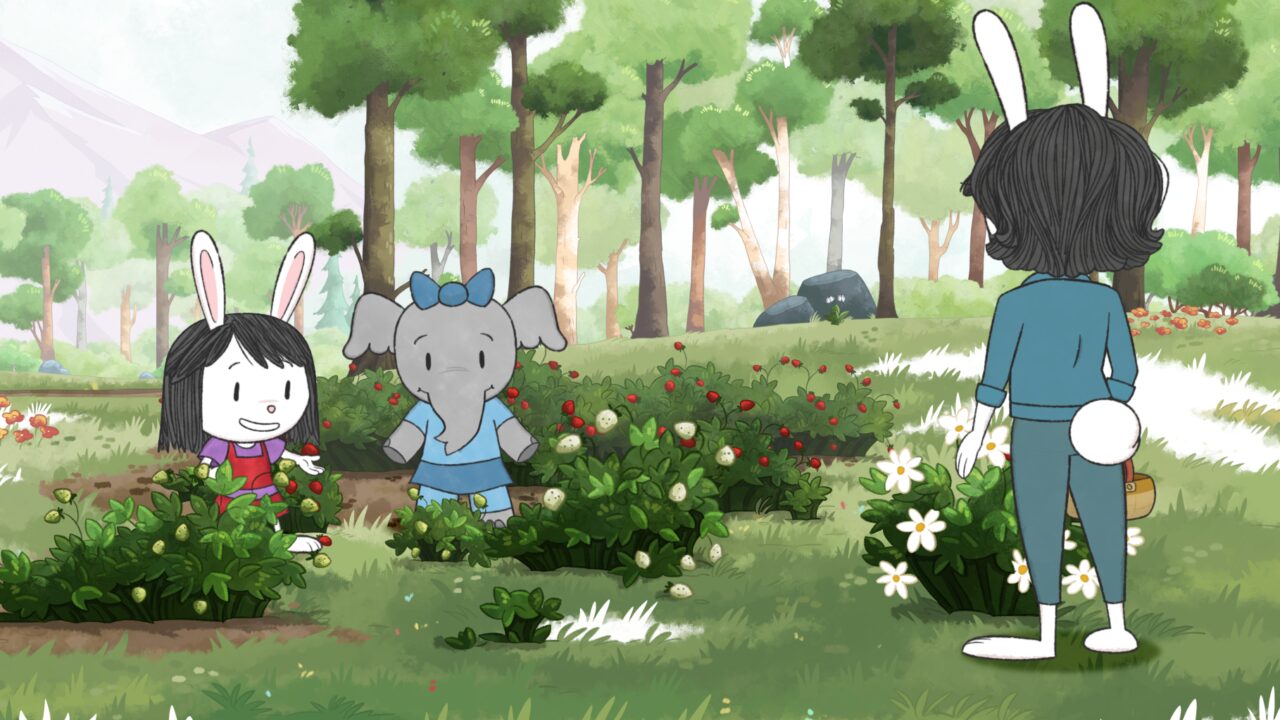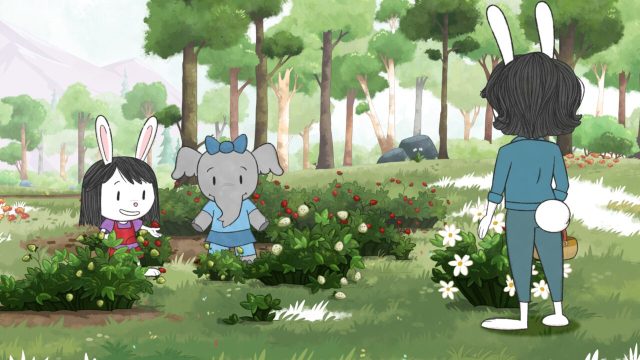
Science is all about asking questions and making observations—and so are young children!
Observation, an important part of scientific inquiry, leads to discovery and learning. By encouraging your child to use their five senses—seeing, hearing, smelling, touching, and tasting—you’re empowering them to stay curious and grow in their environment.
Jorge Cham, co-creator and executive producer of “Elinor Wonders Why,” is a cartoonist and robotics engineer whose own daughter Elinor inspired the show’s main character, an observant and curious bunny rabbit with seemingly boundless energy to explore and learn.
“My youngest daughter Elinor was four when we were developing ‘Elinor Wonders Why.’ The real Elinor is super curious and I got inspired by her relentless question-asking and excitement. I would see her get excited about learning things and discovering the world around her,” Cham said.
“Our premise is that all kids are curious at a young age—the entire world, the entire universe is new to them. Their brains are hungry for information on how things work. Every kid is curious to learn how to ask questions and how to answer them. We’re not only teaching science facts but also how to think, ask questions, and look for answers yourself through observations.” Elinor encourages children and grown-ups at home to ask their own questions and experience the joy of discovery and understanding.
As your child sharpens their powers of observation and more questions about the natural world arise, rest assured—you don’t have to be a professional engineer to point your child in the right direction! “Parents might feel intimidated by science and science questions, saying, ‘What if I don’t know the answer? I don’t want to say the wrong thing.’ One of the things we’re aiming to do with the show is saying that you don’t always need to know the answer,” Cham said. “Sometimes you can reflect it back to the kids by asking, ‘I don’t know, what do you think?’”
The next time your child is feeling extra curious, motivate them to keep asking questions and use their senses to discover the answers (or find more questions!).
Tap Into the Power of Observation With Your Five Senses
Inspire your young child to use their five senses to observe the world around them. As Cham said, “Observations are the key to science!”
1. What do you see? When your child has a question, encourage your young scientist to look closer! “Owl Girl” is one of Cham’s favorite episodes when it comes to the power of making visual observations and constructing explanations. “Elinor thinks she knows all about owls—they’re awake at night and sleep during the day. But one day when she’s with her grandmother, she sees a burrowing owl and it turns her world upside down,” Cham said. “Through observing with her eyes, she notices these owls are different and realizes there are different kinds of owls. Science can reveal things you thought were one way but are another.”
Observation activity: Observe With a DIY Magnifying Glass
2. What do you smell? Cham suggested inspiring your child to sniff out new things by saying something simple like, “Let’s use our noses to smell!” to help your child observe and make sense of everyday outings, like walking past a garden or baking a cake. In “Colorful and Tasty,” Elinor and her friends are trying to sell cupcakes at a bake sale, but no one is buying any! After observing how flowers attract bees through smell, the kids use a fan to spread the aroma of the cupcakes. Before they know it, the place is “buzzing” and they sell every cupcake!
Observation activity: Play a Senses Discovery Game
3. What do you feel? Young children are naturally tactile learners. Cham recommended leaning into this to help them understand their world. Grab a soft blanket, a wooden block, or a fallen leaf and ask, “What can you tell about this object by using your fingers and hands?” “Ms. Mole’s Glasses” is one of Cham’s favorite episodes when it comes to sensory exploration. When Ms. Mole forgets her glasses at school, Elinor and her friends follow her to return them. “She has big, thick glasses that she leaves at school, and they retrace her steps through town and figure out Ms. Mole observes a lot of things through other senses—bread through smell, fruit through feeling. I love that episode because it’s so tactile.”
Observation Activity: Nighttime Is a Great Time to Explore!
4. What do you taste? Even something as ordinary as lunchtime can be full of opportunities for little ones to use their senses. In “Strawberry Jam,” Elinor plans the perfect camping breakfast for her dad’s birthday but realizes they’re out of his favorite strawberry jam. She and her friend Olive set out to find some strawberries and learn how to tell which strawberries are ripe and which are not. The two girls then use the ripe strawberries to make the perfect birthday breakfast for Elinor’s dad.
Observation activity: The next time you’re sharing a snack with your child, let the taste and texture of your treat lead to curiosity-sparking questions. Is the cookie salty or sweet? What ingredients might make a cookie taste sweet? Is the banana soft? How do you know when it’s ready to eat?
5. What do you hear? Cham said asking a question like, “How does this sound different from other things you’ve heard before?” can help you explore the natural world with your child. In “Make Music Naturally,” Elinor and her friends learn that Señor Tapir is putting on a concert. They want to participate but don’t have any instruments. After hearing all of the beautiful sounds around them in nature, Elinor realizes that they can make their own by listening to nature.
Observation activity: Play Elinor’s Nature Adventure Game
—Kayla Craig is a writer, podcaster, and author of To Light Their Way: A Collection of Prayers & Liturgies for Parents. She’s also a mom to four curious and messy young kids.
RELATED:
6 Ways to Explore Nature with Preschoolers
“We Can Do Hard Things:” Building Resilience in Kids
5 Ways to Build Your Preschooler’s Confidence











